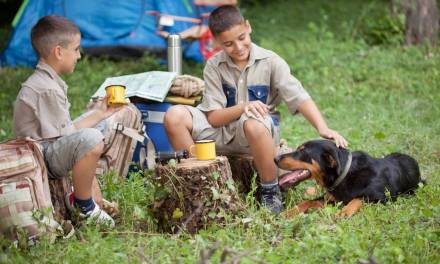Nature may not be a universal panacea, but it does bring a whole host of rewards. Here we look at how it might improve students’ learning achievements.
Spending time in nature has been shown to have mental and physical benefits for children and adults alike. So it’s worrying that children are spending ever less time in nature.
The National Trust’s Natural Childhood report, written by Stephen Moss, shows that fewer than one in 10 kids regularly play in wild places, compared to almost half a generation ago.
The majority of today’s children play outside for less than an hour a day, whereas their grandparents were outside for around three hours per day.
Why does this matter? Because recent research is showing that time spent in nature can improve students’ academic performance, by boosting creativity, attention, concentration and motivation.
Benefits of interacting with nature
One study found that young people who had backpacked in a wild environment for three days performed significantly better on solving puzzles requiring a creative solution than a control group who hadn’t participated in the hike.
In another study, University of Michigan students who had walked in nature reported a 20% improvement on tests requiring concentration and short-term memory compared to a walk in an urban environment; participants also said that their mood was much better after the nature walk than the city walk.
It’s also been found that just 20 minutes in a park environment improves attention levels in children with ADHD.
Motivated students are more likely to engage with learning and especially self-directed study. Research into the effects of environment-based education showed that US high school children experienced higher levels of motivation following time spent in nature. The students also reported increased confidence.
An environment-based programme might involve a conservation project at a local park. The project is designed and carried out by the students, giving them a sense of empowerment and achievement that doesn’t occur with classroom-based learning. Interestingly, teachers reported that the effects were greater for inner-city students who might be experiencing nature for the first time.
Why is there such a positive impact?
The jury is still out on why nature is so beneficial. One theory is that wild places are restorative – nature provides a place where we can rest and relax away from the stresses of everyday life.
Students can become overwhelmed by constant demands on their attention – study, homework, technology, social demands and so on. This overloads the brain’s executive attentional system, but time spent in nature is particularly effective in replenishing depleted attentional resources.
So being out in nature could be hugely beneficial to your students’ performance – while also improving mood and fitness – and the good news is that it’s not hard to put this into practice. A three-day wilderness hike is beyond the scope of many of us but most schools will have a local park, while some will be lucky enough to be close to a nature reserve, woodland or lake.
Just 20 minutes spent in these natural places has an effect; you could even create a wildlife garden or patch at school, getting the kids involved in making the very thing they’re going to benefit from.
Your students will be happier, healthier and more academically successful – and who doesn’t want that?
Rebecca has been a writer and editor for almost 20 years. She writes on a huge range of subjects, concentrating on sport, nature, mental health, and crafts.









